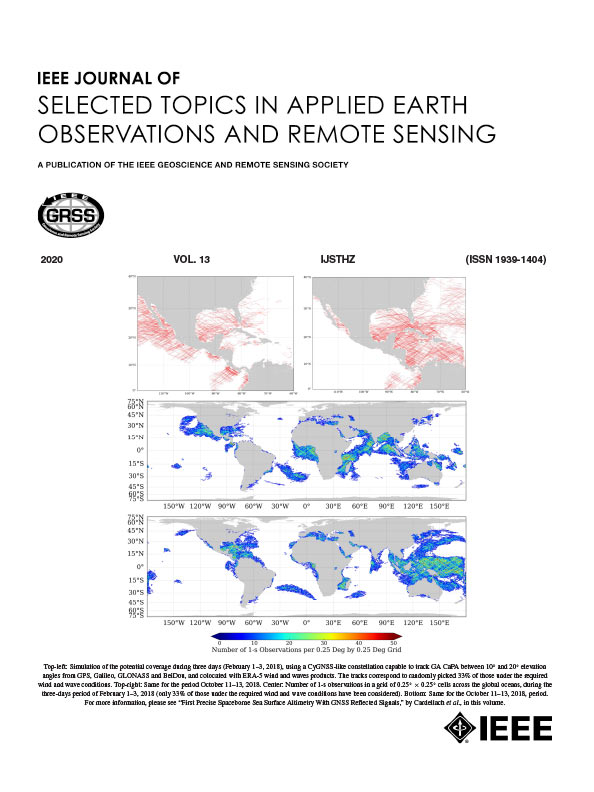Sequential Inversion for Helicopter Time-Domain Electromagnetics Based on a Regularized Extended Kalman Filtering
IF 4.7
2区 地球科学
Q1 ENGINEERING, ELECTRICAL & ELECTRONIC
IEEE Journal of Selected Topics in Applied Earth Observations and Remote Sensing
Pub Date : 2025-04-10
DOI:10.1109/JSTARS.2025.3559504
引用次数: 0
Abstract
The helicopter time-domain electromagnetic method (HTEM) has been widely applied in challenging geological terrains, particularly in large-scale mineral exploration, underground water resource detection, and the selection of sites for underground engineering, due to its advantage of not requiring personnel to enter the detection area. Currently, the 1-D inversion method with lateral constraints, which is commonly used in HTEM, faces challenges quickly delivering inversion results in the field due to its high computational demands and lengthy processing time. In this article, we propose a sequential inversion method for HTEM based on the regularized extended Kalman filter (REKF). The REKF algorithm is used to predict the current inversion result at a given time by using the inversion result from the previous moment, and predictions are corrected with the observed data at that specific time. We also introduce a vertical roughness regularization term to avoid overfitting issues during the inversion process. Based on the sequential processing strategy of measuring while inverting, the REKF algorithm yields the optimal solution of the inversion objective function in just a few iterations, or even a single iteration, enabling near real-time calculations. In the simulation experiments, the advantages of the REKF method are demonstrated by comparing the inversion results of the REKF method with those of the extended Kalman filter method and the Occam method with lateral constraints. Finally, we perform REKF inversion on HTEM data obtained from a location in Xinjiang, China. The results demonstrate the accuracy and practicality of the REKF inversion method.基于正则化扩展卡尔曼滤波的直升机时域电磁序列反演
直升机时域电磁法(HTEM)由于其不需要人员进入探测区域的优点,已广泛应用于复杂的地质地形,特别是在大型矿产勘探、地下水资源探测和地下工程选址等方面。目前,HTEM中常用的带横向约束的一维反演方法由于计算量大、处理时间长,在现场快速获得反演结果面临挑战。本文提出了一种基于正则化扩展卡尔曼滤波(REKF)的HTEM序列反演方法。REKF算法利用前一时刻的反演结果预测给定时刻的当前反演结果,并用该时刻的观测数据对预测结果进行校正。我们还引入了垂直粗糙度正则化项,以避免在反演过程中出现过拟合问题。基于边反演边测量的顺序处理策略,REKF算法只需几次迭代,甚至一次迭代就能得到反演目标函数的最优解,实现了近乎实时的计算。在仿真实验中,通过将REKF方法的反演结果与扩展卡尔曼滤波方法和带横向约束的Occam方法的反演结果进行比较,证明了REKF方法的优越性。最后,我们对中国新疆某地的HTEM数据进行了REKF反演。结果证明了REKF反演方法的准确性和实用性。
本文章由计算机程序翻译,如有差异,请以英文原文为准。
求助全文
约1分钟内获得全文
求助全文
来源期刊
CiteScore
9.30
自引率
10.90%
发文量
563
审稿时长
4.7 months
期刊介绍:
The IEEE Journal of Selected Topics in Applied Earth Observations and Remote Sensing addresses the growing field of applications in Earth observations and remote sensing, and also provides a venue for the rapidly expanding special issues that are being sponsored by the IEEE Geosciences and Remote Sensing Society. The journal draws upon the experience of the highly successful “IEEE Transactions on Geoscience and Remote Sensing” and provide a complementary medium for the wide range of topics in applied earth observations. The ‘Applications’ areas encompasses the societal benefit areas of the Global Earth Observations Systems of Systems (GEOSS) program. Through deliberations over two years, ministers from 50 countries agreed to identify nine areas where Earth observation could positively impact the quality of life and health of their respective countries. Some of these are areas not traditionally addressed in the IEEE context. These include biodiversity, health and climate. Yet it is the skill sets of IEEE members, in areas such as observations, communications, computers, signal processing, standards and ocean engineering, that form the technical underpinnings of GEOSS. Thus, the Journal attracts a broad range of interests that serves both present members in new ways and expands the IEEE visibility into new areas.

 求助内容:
求助内容: 应助结果提醒方式:
应助结果提醒方式:


